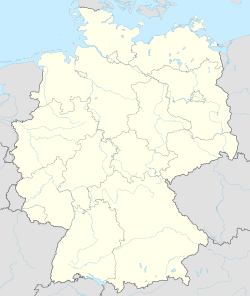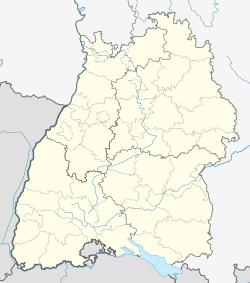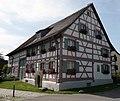Gaienhofen | |
|---|---|
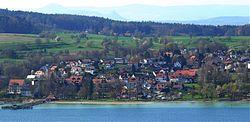 | |
Location of Gaienhofen within Konstanz district 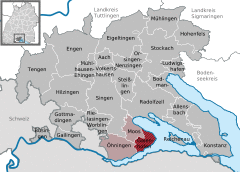 | |
| Coordinates: 47°40′59″N 8°58′56″E / 47.68306°N 8.98222°E | |
| Country | Germany |
| State | Baden-Württemberg |
| Admin. region | Freiburg |
| District | Konstanz |
| Government | |
| • Mayor | Uwe Eisch (CDU) |
| Area | |
| • Total | 12.55 km2 (4.85 sq mi) |
| Elevation | 425 m (1,394 ft) |
| Population (2019-12-31)[1] | |
| • Total | 3,388 |
| • Density | 270/km2 (700/sq mi) |
| Time zone | UTC+01:00 (CET) |
| • Summer (DST) | UTC+02:00 (CEST) |
| Postal codes | 78343 |
| Dialling codes | 07735 |
| Vehicle registration | KN |
| Website | www.gaienhofen.de |
Gaienhofen is a town in the district of Konstanz in Baden-Württemberg in Germany.
Since 1974, Gaienhofen consists of four villages: Gaienhofen, Gundholzen, Hemmenhofen and Horn. Attractions, apart from the Lake of Constance, include the Hermann-Hesse-Höri-Museum and Otto-Dix-Haus.
World heritage site
It is home to one or more prehistoric pile-dwelling (or stilt house) settlements that are part of the Prehistoric Pile dwellings around the Alps UNESCO World Heritage Site.[2]
Twin towns
Gaienhofen is twinned with:
 Saint-Georges-de-Didonne, France
Saint-Georges-de-Didonne, France Balatonföldvár, Hungary
Balatonföldvár, Hungary
See also
- Erich Heckel
- Hermann Hesse
Gallery
Stone Age housings (reconstructed) in Unteruhldingen
Chapel in Gaienhofen-Hemmenhofen
References
- ^ "Bevölkerung nach Nationalität und Geschlecht am 31. Dezember 2019". Statistisches Landesamt Baden-Württemberg (in German). September 2020.
- ^ UNESCO World Heritage Site - Prehistoric Pile dwellings around the Alps

